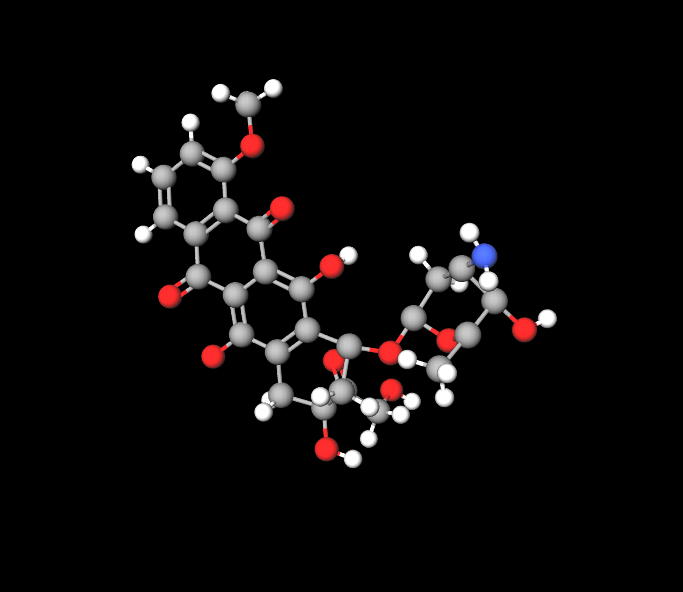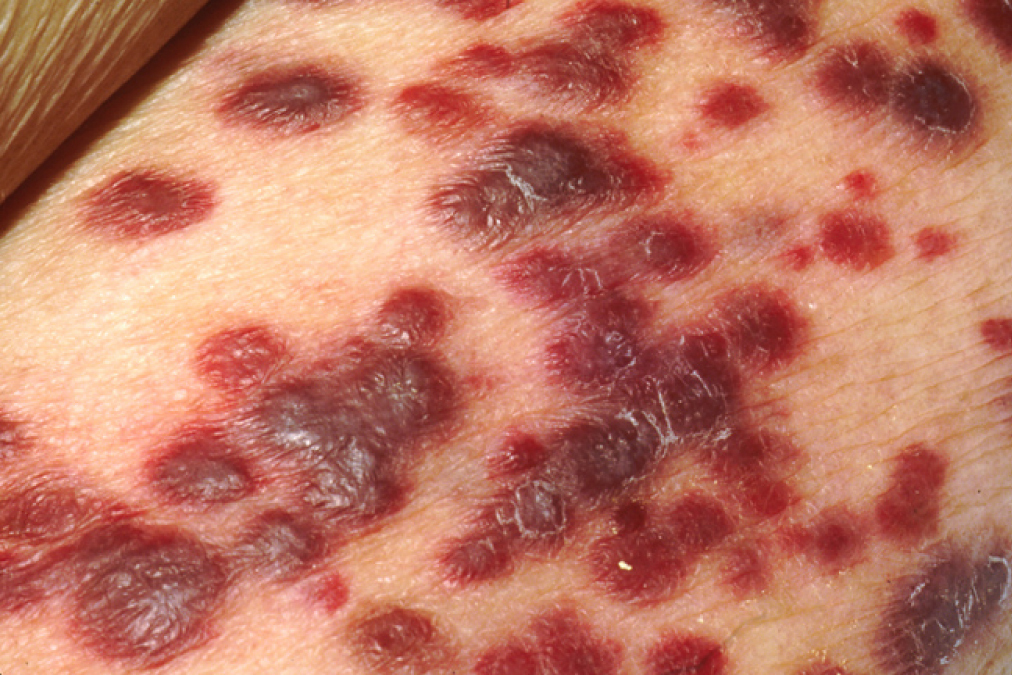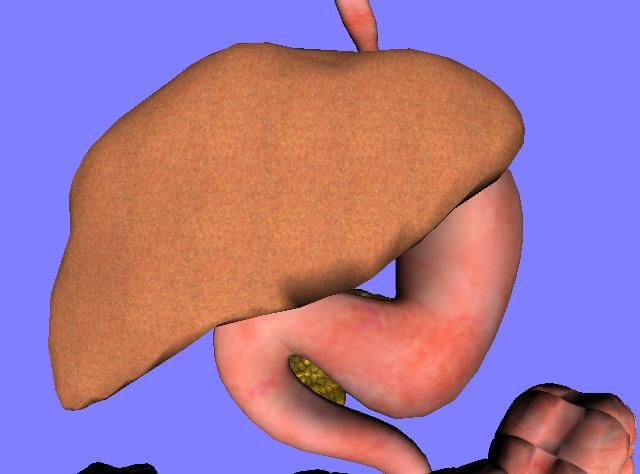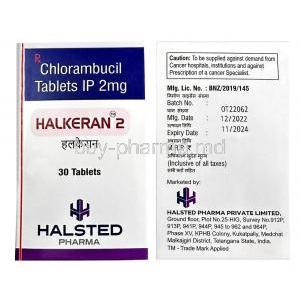Caelyx Injection
- Introduction to Caelyx Injection
- Composition and Formulation
- Doxorubicin hydrochloride mechanism of action
- Approved Uses of Caelyx Injection
- Off-Label Uses of Caelyx Injection
- Doxorubicin hydrochloride dosage and Administration Guidelines
- Doxorubicin hydrochloride side effectsI
- Serious Side Effects and Risks
- Important Precautions and Warnings
- Contraindications of Caelyx Injection
- Administration in Special Populations
- Drug Interactions
- Overdose Management
- Handling and Storage Instructions
Introduction to Caelyx Injection
Overview of Caelyx Injection
Caelyxis Injection is a type of doxorubicin that effectively targets cancer cells while reducing toxicity in the body—a breakthrough in how we treat cancer patients today.
Therapeutic Class and Classification
Caelyx is part of the anthracycline group of cancer drugs. It uses a liposomal method to improve how the medication spreads in the body. This specialized technique helps minimize cell harm during treatment compared to chemotherapy methods.
General Uses in Oncology and Beyond
Caelys Injection is mainly used in treating breast cancer and ovarian cancer as well as HIV-associated Kaposi sarcoma in the field of oncology. Its range of uses increases over time due to its flexibility and effectiveness.

Key Benefits of Caelyx in Medical Treatments
- Enhanced precision is needed in delivering medication that harms the body.
- Extended duration in the bloodstream as a result of being enclosed in liposomes.
- Improved patient adherence due to reduced occurrence of reactions.
Composition and Formulation
Active Ingredient: Pegylated Liposomal Doxorubicin
The central element is doxorubicin hydrochloride enclosed in a liposome with a polyethylene glycol (PEG) coating around it. The distinctive design of this structure helps protect the medication from being cleared by the system, allowing for its presence in the bloodstream and improved precision in targeting tumors.

Role of Pegylation in Drug Efficacy
Pegylation is a method that alters how doxorubicin behaves in the body by changing its pharmacokinetics properties; it helps decrease any response and allows for a controlled release, specifically at the tumor location while reducing exposure to the entire system.
Excipients and Their Functions
The mixture includes fat molecules along with substances that help maintain consistency and regulate the distribution of the components.
Doxorubicin hydrochloride liposome
Doxorubicin, in a form encapsulated within lipid-based particles, is employed either as a standalone treatment or in combination with other medications for specific forms of ovarian cancer as well as AIDS-related Kaposi sarcoma and multiple myeloma treatment purposes.
Doxorubicin hydrochloride liposomal vs doxorubicin
The medication Doxorubicin hydrochloride liposome consists of Doxorubicin hydrochloride enclosed in particles called liposomes. Due to its sustained release in the body, it requires less frequent administration, and it might offer improved efficacy and reduced side effects compared to other formulations of Doxorubicin hydrochloride.
Doxorubicin hydrochloride mechanism of action
How Caelyx Works in Targeting Cancer Cells
Caelyne achieves cell destruction by disrupting the production of DNA in cancer cells that are actively multiplying. It is enclosed in liposomes to improve its ability to locate tumors, leveraging the enhanced permeability and retention (EPR).

Advantages of Liposomal Delivery System
- Preserves the component from deterioration.
- Ensuring lasting blood flow to maximize the infiltration of tumors.
- Minimizes harm to healthy tissues.
Selectivity and Reduced Toxicity
The accurate targeting reduces the chances of heart related side effects often seen with doxorubicin treatments.
Approved Uses of Caelyx Injection
Treatment of Advanced Breast Cancer
Caelyx is considered crucial in managing breast cancer patients who do not respond well to treatments due to its effectiveness and safety record, making it a top choice among healthcare providers.
Management of Ovarian Cancer
In cases of recurring cancer, Caelyx shows tumor response rates and prolongs the period without disease progression, meeting important medical needs that are currently unmet.
Use in Kaposi’s Sarcoma in HIV Patients
Caelyxes provides support for individuals suffering from AIDS-related Kaposi's sarcoma by diminishing the size of lesions and enhancing their overall quality of life.

Approved Uses in Hematologic Malignancies
Caelyxis is a promising option for blood cancers due to its liposomal form, which helps reduce bone marrow side effects.
Off-Label Uses of Caelyx Injection
Emerging Evidence in Pancreatic Cancer
Early research indicates that Caelyxis might improve the effectiveness of treatments for cancer when paired with chemotherapy drugs.
Role in Hepatocellular Carcinoma Management
Researchers are investigating Caelyx's precision delivery method as a solution for treating hepatocellular carcinoma patients who have few treatment alternatives available to them.



Use in Sarcomas and Rare Tumor Types
Clinical studies show advantages for soft tissue sarcomas, with Caelyxs widening the scope of treatment options.
Doxorubicin hydrochloride dosage and Administration Guidelines
Recommended Dosage for Approved Indications
The dosage needed depends upon the specific condition being treated. For breast and ovarian cancer cases, a standard amount would be 50 mg/m² given every four weeks with adjustments tailored to suit the individual's tolerance level.
Step-by-Step Administration Process
- Please administer through a drip lasting 30 to 60 minutes.
- Keep an eye out for any reactions while giving the infusion.
- Remember to clear the IV line both before and after administering the infusion.
Adjustments for Renal and Hepatic Impairment
Patients with liver problems should consider lowering their dosage to reduce the risk of side effects.

Guidelines for Missed Doses
If you forget to take a medication dose, contact your doctor to figure out what to do.
Doxorubicin hydrochloride side effectsI
Frequently Reported Adverse Reactions
Management of Minor Side Effects
Measures like using moisturizers for hand-foot syndrome and taking nausea drugs can help reduce discomfort.
Monitoring Requirements
Ensure that you monitor your heart to catch any potential issues early on, and remember to check your blood counts regularly to manage any myelosuppression effectively.
Serious Side Effects and Risks
Cardiotoxicity and Cardiac Monitoring
One of the concerns linked to the use of Caelyx injection is its potential to cause harm to the heart, which is known as cardiotoxicity when taken at doses over time. Doxorubicin found in Caelyxs is capable of impacting heart cells and triggering stress that can result in heartbeats and cardiac issues like heart failure. To address this risk effectively; patients receiving Caelyxs treatment should undergo heart check ups such, as echocardiograms or multi gated acquisition scans to evaluate their hearts left ejection fraction. Detecting heart problems can help in taking action to avoid permanent damage to the heart.
Long-Term Adverse Effects
The lasting impacts of Caelyx usage can lead to changes in the skin, like hand-foot syndrome, and potential harm to reproductive health. Additionally, extended treatment might heighten the chances of developing types of cancer, such as leukemia. Due to these dangers, it is crucial to monitor patients over the long term, conducting regular assessments of organ performance and any new issues that may arise.
Important Precautions and Warnings
General Precautions Before Initiating Therapy
Before initiating Caelyx's treatment regimen, assessment is an essential and mandatory requisite Step to evaluate the patients cardiovascular health, liver functionality, and renal status state of Good health. Individuals with current prevalent conditions like advanced heart disease or impaired liver function may necessitate a modification in treatment dosages or consideration of alternative therapeutic options. Secondly, diligent monitoring throughout the course of therapy is crucial for the timely identification of any adverse reactions, enabling swift intervention and management.

Risks of Myelosuppression
Caelyxis may trigger myelosuppression which is identified by decreased bone marrow function resulting in blood cell levels. This situation heightens susceptibility to infections, blood loss, and anemia. Regular blood exams are essential for individuals receiving Caelyxis therapy to track their red blood cell well as platelet levels. Adjustments or pauses in dosage might be needed based on the seriousness of myelosuppression.
Infection Prevention During Treatment
Caelyx's immunosuppressive properties can make patients more prone to infections. Hence, it might be advisable for high-risk patients to consider measures like using agents. Regularly checking for infection indicators like fever, chills, and unexpected fatigue is essential. Promptly addressing any signs of infection is crucial to prevent complications.
Doxorubicin hydrochloride toxicity
Utilizing doxorubicin hydrochloride in combination with radiation may heighten the risk of toxicity affecting the heart muscle (myocardium), mucous membranes (mucosa), skin tissues, and liver function.
Contraindications of Caelyx Injection
Absolute Contraindications
Caelyx is not recommended for individuals with a known allergy to doxorubicin or any ingredients in the blend. It is best to avoid its use for those with liver issues, especially those with bilirubin levels exceeding 3 mg/dL, to prevent any worsening of liver problems. Furthermore, it should not be used by patients who have previously undergone treatment with anthracyclines and have a record of heart failure.
Situations Requiring Careful Consideration
Patients with liver issues need a dose and more careful supervision when taking Caelyxis. Similar caution is necessary for people with kidney problems to prevent the drug from building up and causing harm. Pregnant or nursing mothers should steer clear of Caelyxbecause the potential dangers to the baby or infant outweigh any treatment benefits. Deciding to use Caelyxduring these circumstances requires an assessment of risks and benefits.
Administration in Special Populations
Use in Elderly Patients: Adjustments and Monitoring
Elderly individuals may have changes in the way Caelyx works in their bodies and are at a risk of facing side effects like weakened systems and heart issues from it as well. This may mean the amount they need to take must be adjusted. It's important to keep an eye on how their organs function, especially the heart and kidneys, to avoid serious problems. Before starting treatment, it's crucial to evaluate patients for any other health conditions they might have.
Safety During Pregnancy and Lactation
Caelyxy is labeled as a pregnancy category D medication, which means it could pose a risk to the baby's health and development based on animal studies showing toxicity and malformations linked to its usage during pregnancy. Due to these concerns about harm to the fetus from Caelyxy exposure during pregnancy or breastfeeding as it can be excreted in breast milk, alternative treatment options should be explored for expecting or nursing mothers.

Administration in Pediatric Patients
Caelyxis not extensively researched in children. There is uncertainty about its safety and effectiveness in patients.It is sometimes prescribed for cancer treatment with medical supervision. The dosage for children should be calculated meticulously based on their body surface area. They need to be monitored for any potential adverse effects compared to adults.
Drug Interactions
Interactions with Chemotherapeutic Agents
When Caely is paired with chemotherapy drugs, it can have effects. Still, it can also increase the risk of side effects, like myelosuppression, when paired with cyclophosphamide or cardiotoxicity when combined with other anthracyclines or taxanes. It is crucial to closely monitor and adjust the dosage when using Caely in combination therapy treatments.
Impact of Caelyx on CYP Enzyme Pathways
Caelyxis is known to impact cytochrome 450 enzymes, like CYP 34, which could lead to changes in how other medications are processed in the body. Patients on drugs that are broken down by CYP enzymes should be closely watched for any changes in drug levels or possible side effects. Adjustments to the doses of medications might be needed to prevent any interactions.
Precautions with Concurrent Medications
Patients should inform their healthcare provider of all medications they are currently taking, including over-the-counter drugs and supplements. Particular caution is required when combining Caelyx with anticoagulants, as the risk of bleeding may increase. Additionally, drugs that affect the liver or renal function may alter the pharmacokinetics of Caelyx, requiring dose adjustments or increased monitoring.
Overdose Management
Signs and Symptoms of Caelyx Overdose
Possible indications of an intake of Caelyxx could encompass bone marrow suppression and cardiac issues alongside signs of rapid toxicity, like nausea and mouth inflammation; in extreme situations of overdose could lead to organ malfunction requiring urgent medical intervention to address the situation.
Immediate Actions and Supportive Care
When someone overdoses on a substance, it's essential to provide care. This could involve giving blood products, managing fluid and electrolyte levels, and taking steps to help the heart and kidneys. In situations patients might need to go to the care unit for ongoing observation.
Long-Term Implications of Overdose
Taking too much Caelyx can cause harm to the heart and other organs, such as bone marrow suppression and dysfunction in the body's systems. Processing an overdose may require recovery time. This could raise the chances of developing additional cancers in survivors. It is advised for individuals who have gone through an overdose to be regularly monitored for delayed issues in the future.
Handling and Storage Instructions
Proper Storage Conditions for Caelyx
Caelyxis should be kept at temperatures ranging from 2°C to 8°C (36°F to 46°F), shielded from light, and avoided freezing, as this could cause the drug to degrade and compromise its effectiveness and safety.
Shelf Life and Stability Concerns
Caelyxis typically good, for two years if kept under the conditions before you open it up. An important thing to remember is that once you do open it up you should make sure to use it within a specific timeframe specified by the maker to get the best results.
Safe Handling Precautions for Healthcare Professionals
Healthcare workers need to follow safety protocols when dealing with Caelys. They must stay safe by wearing gear like gloves and goggles to avoid contact with the substance. During administration of Caelys, in an environment is crucial to prevent any leaks or accidental exposure during the process.
Caelyx Injection FAQ
- What is doxorubicin hydrochloride used for?
- What is doxorubicin hydrochloride?
- How to dissolve doxorubicin hydrochloride?
- Is doxorubicin a strong chemotherapy?
- What is the difference between doxorubicin and doxorubicin hydrochloride?
- What is a serious side effect of doxorubicin?
- How successful is doxorubicin?
- What cancers can doxorubicin treat?
- Can doxorubicin cause heart failure?
- What organ does doxorubicin affect?
- Why is doxorubicin called red death?
- Can doxorubicin shrink tumors?
- How many times can you have doxorubicin?
- What foods should you avoid while taking doxorubicin?
- How do you feel after doxorubicin?
- Which is the most serious side effect of doxorubicin?
- Who should not take doxorubicin?
- Does doxorubicin cause kidney damage?
- What is the antidote for doxorubicin?
- What is the alternative to doxorubicin?
- Can doxorubicin cause death?
- What is Caelyx used for?
- How often is Caelyx given?
- How effective is Caelyx for ovarian cancer?
- What is a reaction to Caelyx?
What is doxorubicin hydrochloride used for?
It inhibits an enzyme known as topoisomerase II, which is responsible for cutting and fixing DNA strands. This action decreases the proliferation of cancer cells and other growing cells.
What is doxorubicin hydrochloride?
Chemotherapy drug doxorubicin hydrochloride is commonly employed in the treatment of forms of cancer.
How to dissolve doxorubicin hydrochloride?
First, you need to dissolve doxorubicin (hydrochloride \) in DMS and mix it with the desired aqueous buffer.
Is doxorubicin a strong chemotherapy?
One of the chemotherapy medications ever created for breast cancer is Doxorubicin.
What is the difference between doxorubicin and doxorubicin hydrochloride?
The main component of doxorubicin hydrochloride is doxorubicin, also known as Adriamycin and hydroxydaunorubicin.
What is a serious side effect of doxorubicin?
If you notice any of the following signs: shortness of breath, breathing issues, swelling in hands or feet, or a fast or irregular heartbeat, make sure to contact your doctor. Doxorubicin may lead to a significant drop in your bone marrow blood cell count.
How successful is doxorubicin?
Response rates for doxorubicin used alone varied from 16 to 27%. When doxorubicin was combined with chemotherapy drugs, the response rates ranged from a minimum of 14% observed with doxorubicin and streptozotocin to a maximum of 34% seen with the combination of doxorubicin and ifosfamide.
What cancers can doxorubicin treat?
Breast cancer, along with lung cancer and other types such as cancer and ovarian cancer, are all forms of diseases that affect parts of the body. Additionally, there are types like thyroid cancer, non-Hodkins lymphoma, and Hodgkin's lymphoma. Furthermore multiple myeloma and sarcoma are also included among the list of cancers. Pediatric cancers affecting children are also part of this group of diseases.
Can doxorubicin cause heart failure?
The heightened possibility of heart issues due to doxorubicin can show up suddenly during treatment. Persist for weeks to years after treatment ends, leading to a variety of symptoms ranging from heartbeats to severe heart failure.
What organ does doxorubicin affect?
Doxorubicin can damage the heart muscle, though heart failure as a result is uncommon.
Why is doxorubicin called red death?
They sometimes refer to doxorubicin as the " devil" chemotherapy because of its red hue and the challenging side effects it brings about for individuals undergoing treatment, with it for various forms of cancer either on its own or in combination with other medications.
Can doxorubicin shrink tumors?
Prior to undergoing surgery to reduce the size of tumors in advanced-stage breast cancer and as part of the treatment for advanced-stage breast cancer.
How many times can you have doxorubicin?
The prescribed amount of Doxorubicin Hydrochloride Injection is 60, mg/m² given as an injection into a vein on the day of every 21 day treatment round alongside cyclosphamide, for a total of four rounds.
What foods should you avoid while taking doxorubicin?
It's best to steer off consuming any foods or items that have turmeric (curcumin) in them when you're on doxorubicin, as it could lessen the effectiveness of the medication.
How do you feel after doxorubicin?
When undergoing treatment with doxorubicin, you might experience anemia, which can lead to feelings of paleness, fatigue, and difficulty breathing during activity. If the number of blood cells drops low, you may require a blood transfusion.
Which is the most serious side effect of doxorubicin?
Heart failure or heart attack
Who should not take doxorubicin?
Avoid using this medication if you have liver disease or are currently undergoing radiation therapy treatments; also, refrain from taking it if you have had an allergic response to doxorubicin or other chemotherapy drugs in the past or if you're sensitive to certain medications or substances found in foods and dyes.
Does doxorubicin cause kidney damage?
DOXX resulted in a reduction in body weight and a decrease in kidney mass.
What is the antidote for doxorubicin?
Dexrazoxane or dimethyl sulfoxide (DMSO).
What is the alternative to doxorubicin?
Pivarubicin is seen as a more efficient alternative to doxorubicin for treating TNBC and other cancers where doxorubicin treatment is recommended.
Can doxorubicin cause death?
Sudden death could occur as a result of a heart rhythm disorder, with low doses and slow IV infusion rates.
What is Caelyx used for?
It is employed for addressing breast cancer as ovarian cancer along with treating myeloma and Kaposis sarcoma that is related to HIV infection.
How often is Caelyx given?
Once every 4 weeks
How effective is Caelyx for ovarian cancer?
PLDs are both safe and efficient in individuals diagnosed with cancer, even after undergoing multiple prior treatment plans.
What is a reaction to Caelyx?
Skin issues, like rashes or itching • itchy bumps on the skin known as hives or rash • Feeling lightheaded, leading to fainting episodes.









